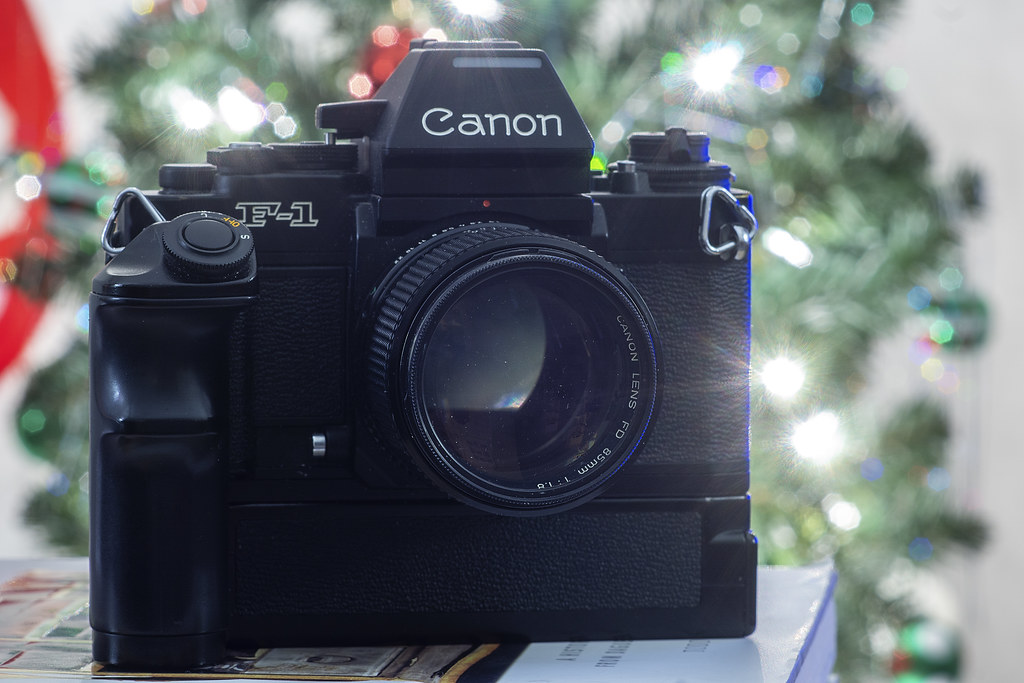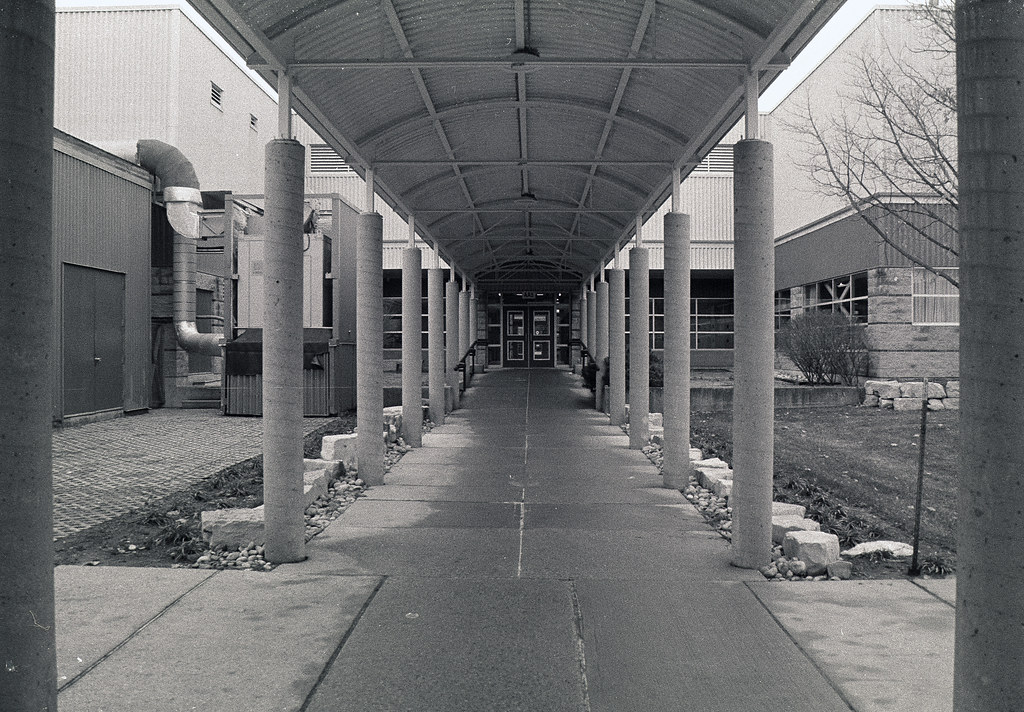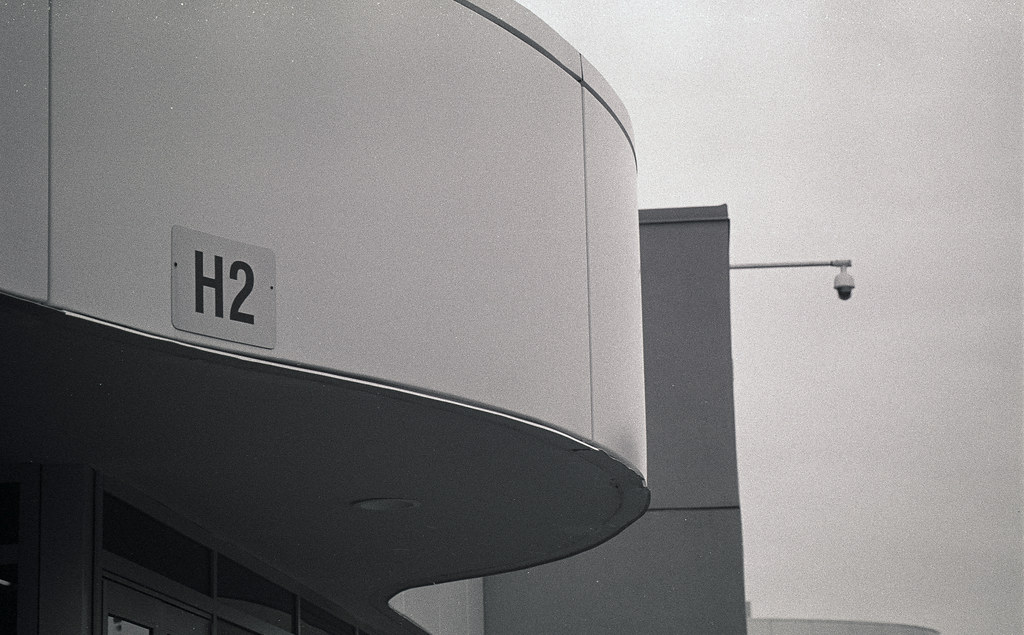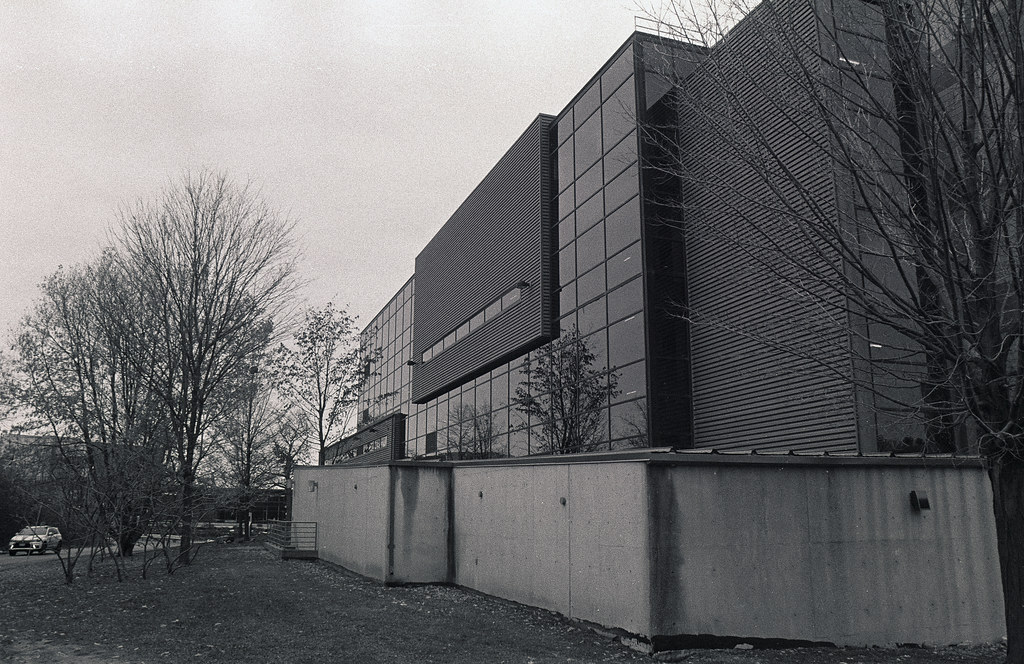If you’re thinking to yourself, haven’t you already reviewed the Canon F-1? Like back in the first year of writing camera reviews? The answer would be yes, I did review an original 1970 F-1. But when it comes to camera names, Canon wasn’t always that creative; this is the New F-1. Which if you dig deep into the camera’s functionality, is a whole other camera, thus needing a review of its own. The F-1N, like the F-1, is Canon’s answer to the rise in electronics in cameras that happened in the late 1970s and the introduction to the Nikon F3. And when it comes to cameras, the F-1N is a beast and frankly, is a joy to take out into the field. Thanks to James Lee for loaning this beauty out!

Camera Specifications
Make: Canon
Model: New F-1 (F-1N)
Type: Single Lens Reflex
Format: 135 (35mm), 24x36mm)
Lens: Interchangable, Canon FD-Mount
Year of Manufacture: 1981-1992


Background
When Canon released the F-1 back in 1970, it was to directly compete with the professional SLR market that Nikon cornered first with the Nikon F then again with the Nikon F2. And while I won’t go into detail with the F-1, Canon did release a minor update to the camera in 1976 with the F-1n. But since the early days of the F-1, Canon had been working on a replacement, and they intended to use the newest technologies to build a better F-1. The A-Series, with the AE-1 and A-1 in the middle of the decade saw the implementation of electronics and IC chips that created cameras that had some level of automation and auto-exposure. When Nikon released the F3, Canon had their answer ready in the New F-1. And yes, even though the New F-1 was a whole new camera, the name didn’t change. The New F-1 took all the good parts of the mechanical nature of the F-1(n) and combined it with the best features of the electronic A-Series to come up with a hybrid camera, electro-mechanical. Not only did they use the latest in Microchip technology, but they also leveraged new materials coming onto the market. The F-1N took the idea of a system camera beyond what Nikon originally had. The body is more than just a place to mount the lens and load the film. It would become the command centre of the whole system. You could choose five different finders, a 100-shot magazine, an AE motor drive, databacks, and more. The idea was that you could customise and use all the best features. The New F-1 had only a single special edition for the 1984 Los Angles Olympics. While we’re unsure when production ceased on the F-1N, it is rumoured that it continued into 1992, even after the introduction of the EOS system in 1987. Official discontinuation happened in 1994 with factory support ending in 2004.


Impressions
If you’ve worked with the original F-1(n), then switching over to the New F-1 should not be too much of a shift in how you operate the camera. Despite having a soft spot for (almost) all things Nikon, I’m not ashamed to admit the F-1N is a handsome camera. You might at first glance think that the camera is made mostly of plastic, and while there are some plastic parts to the camera, it is metal with a matte coating on it. And after picking it up, you’ll know for sure that the whole thing is made of metal. You will want to use a strap, when I was out with the camera I ensured I had a carbine style Backrapid strap and it helped, but this is not a camera I’d want to be lugging around all day especially with a heavy lens on the front. When it comes to camera functionality the New F-1 is wonderfully laid out with everything you need within easy reach and easily operated. There is a couple of weird aspect with the New F-1, like having to lift to the collar to move the shutter speed dial out of the Automatic mode and having three buttons rather close to each other with each controlling something different, the door lock, ISO lock, and EV Lock. While the viewfinder isn’t overly bright, the exposure information that is displayed is perfect. The aperture is transmitted by an optical window and the shutter speed is displayed via a needle system, both are easy to view and are right where you see them with ease. Although my favourite is the nice clean on/off switch around the shutter release, no easy way to accidentally trip the camera on and off, also to adjust any settings without the photographer’s interference.


Experiences
While I had some doubts, after the first couple frames I realised that the New F-1 is a rather satisfying camera to work. Everything about this camera demands to be used. Now the New F-1 is a heavy camera, it is, as I mentioned, mostly metal. That said, you do want to have a good strap, I ran with a back rapid strap and even with that after an hour of shooting I was feeling that weight. Loading the film went smoothly, basically, there are no tricks and if you can load an SLR, you’re good to go with the New F-1. Now I had been loaned out the AE Motor Drive, but I chose to run without the drive. The reason being I’m always critical on the film advance throw, and I’m happy to say the throw is blissfully short and even without a drive, you can run through your roll pretty fast. The shutter release is clean, smooth, and the shutter sound is rather satisfying. Also, there’s no iconic Canon squeal, but that’s no surprise given who the camera is on loan from. Now with a long heavy lens, like the 28-85/4 I was working with, the drive would have added the needed counterbalance, and if you are shooting anything beyond a prime lens you’re going to want to have that drive on, it will add extra weight but generally give the camera a much better balance. The only issue I have is with the film rewind, the rewind button is in an awkward position on the top plate, and can be tricky to trigger. And the traditional button on the bottom cannot be triggered without the motor drive attached.


Optics
As I mentioned in my previous entries on Canon SLRs, the breach-lock system despite being a little different from the bayonets I’m used to on the Nikon F-Mount is probably one of the best-designed systems I’ve come across. Mounting and dismounting lenses can be done rather easily and quickly. Plus you have access to an amazing selection of FD lenses that can be had for a fairly inexpensive price if you know what you’re looking for. Of course with the New F-1, you’re probably going for the more expensive glass, and yes there are some of the legendary L lenses with the red strip available. I worked with the 28-85mm f/4 lens for this review which produced some amazing images although it is a little front heavy, even with the motor drive attached it gave an ill balance to the camera.


Lowdown
The New F-1 is the perfect upgrade for those who have used any of the A-Series cameras and looking to up their game to something more professional looking, or those who have been working with their old F-1(n) and are looking for something newer. Now, these cameras are getting upwards of 30 years old, but don’t let that stop you, these are extremely robust and well built and will continue to serve you for many years to come. There’s even a chance you can still get these repaired. These cameras aren’t cheap on the used market, they will cost you between 200$ for a beat-up version with a standard prism, to ones that will run you between 300-600$ for one in excellent condition with the AE prism. Plus you will pay extra for accessories and the higher-end lenses. But the best part is that if you’re looking to update from your older F-1(n) then you probably already have a selection of the FD-Mount lenses so you just have to worry about paying for the body. Is the payout worth it? Absolutely, the New F-1 is a beautiful piece of camera equipment and technology, it is basically the Nikon F3 to the Nikon F2, same lenses but different accessory kit. I know that if I was a Canon shooter, I’d want one of these in my kit more than an original F-1.


Further Reading
Don’t just take my word on the Canon New F-1, you can check out the reviews by other awesome camera reviewers!
Down the Road – Canon New F-1 Review
35mmc – 5 Frames with the Canon F-1N
CulturedWiki – Canon F-1 Review